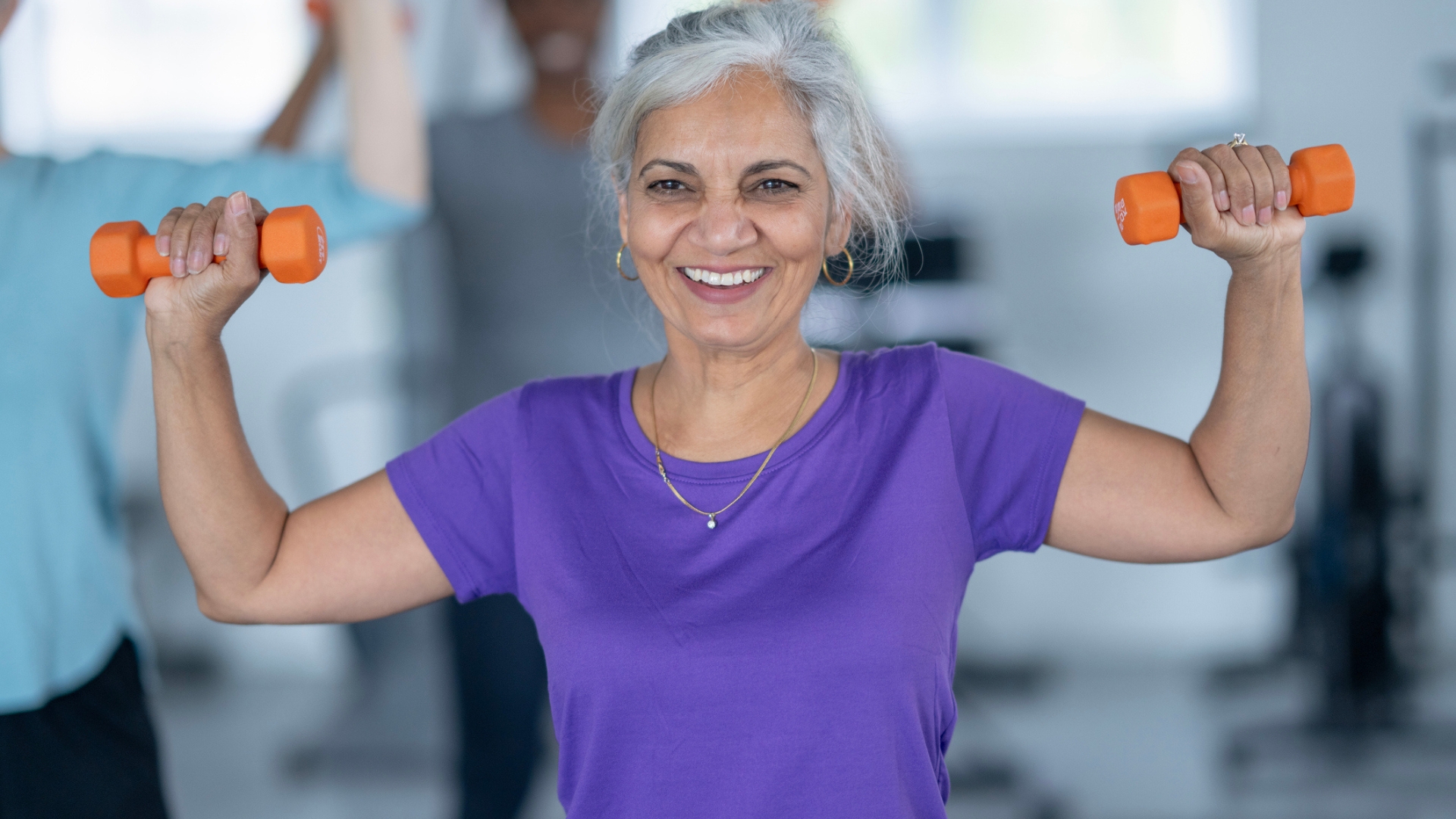A personal trainer says this is the best workout for building strength if you're over 60 and have limited mobility
All you need is a sturdy chair and a light resistance band

Strength training is a useful tool at any age, but it's particularly important as we get older.
Sarcopenia, the natural decline of muscle mass and function, begins around age 35 and accelerates significantly at age 60, according to Harvard Health
The good news is, no matter your age or how much strength and mobility you feel like you’ve lost, it’s never too late to start resistance training and see improvements.
“For someone with limited mobility, strength training is a way to protect independence, improve balance and keep doing the things they love,” says personal trainer and owner of Made Possible Personal Training, Roger Montenegro.
“Age-related muscle loss can make even simple activities, like standing up from a chair or carrying groceries, feel much harder,” he adds.
To combat this, Montenegro has designed a workout to target the major muscle groups in a safe, controlled way. The goal is to help slow muscle loss, reduce fall risk and improve confidence in movement.
All you need is a sturdy chair and a resistance band.
Start your week with achievable workout ideas, health tips and wellbeing advice in your inbox.
Seated banded row
Sets: 1-3 Reps: 5-10
“This exercise strengthens the upper back, improves posture and supports shoulder health—areas that often weaken with age,” says Montenegro.
How to do it
- Sit in a chair or on the floor, with your spine lengthened and feet flat on the floor.
- Loop a resistance band around a sturdy object in front of you.
- Hold the ends and pull the band back toward your ribs, keeping your elbows close to your sides.
- Slowly return to the start and repeat.
Sit-to-stand
Sets: 1-3 Reps: 5-10
“This exercise builds lower-body and core strength, directly improving one of the most important daily movements: standing up from a chair. This move also forms the basics of a squat,” says Montenegro.
How to do it
- Sit toward the front of your chair, with feet hip-width apart and knees bent.
- Place your hands on your hips to help push yourself up if needed.
- Lean forward slightly, press through your heels and stand up tall.
- Slowly lower back down with control and repeat.
Seated overhead press
Sets: 1-3 Reps: 5-10
“This movement strengthens the shoulders and upper arms, helping with everyday tasks like reaching overhead,” says Montenegro.
How to do it
- Sit upright, make fists with your hands and hold them at shoulder height.
- Press your arms overhead without shrugging your shoulders.
- Lower back down with control and repeat. To make the move harder, add some weights like light dumbbells or bottled water.
Heel raise
Sets: 1-3 Reps: 5-10
“This exercise strengthens the calves and ankles, improves balance and supports walking stability,” says Montenegro.
How to do it
- Stand holding the back of a chair for balance. Alternatively, stay seated to reduce the intensity.
- Slowly lift your heels off the floor, pressing your toes into the floor.
- Pause at the top of the movement.
- Lower with control and repeat.

Lou Mudge is a Health Writer at Future Plc, working across Fit&Well and Coach. She previously worked for Live Science, and regularly writes for Space.com and Pet's Radar. Based in Bath, UK, she has a passion for food, nutrition and health and is eager to demystify diet culture in order to make health and fitness accessible to everybody.
Multiple diagnoses in her early twenties sparked an interest in the gut-brain axis and the impact that diet and exercise can have on both physical and mental health. She was put on the FODMAP elimination diet during this time and learned to adapt recipes to fit these parameters, while retaining core flavors and textures, and now enjoys cooking for gut health.
You must confirm your public display name before commenting
Please logout and then login again, you will then be prompted to enter your display name.



